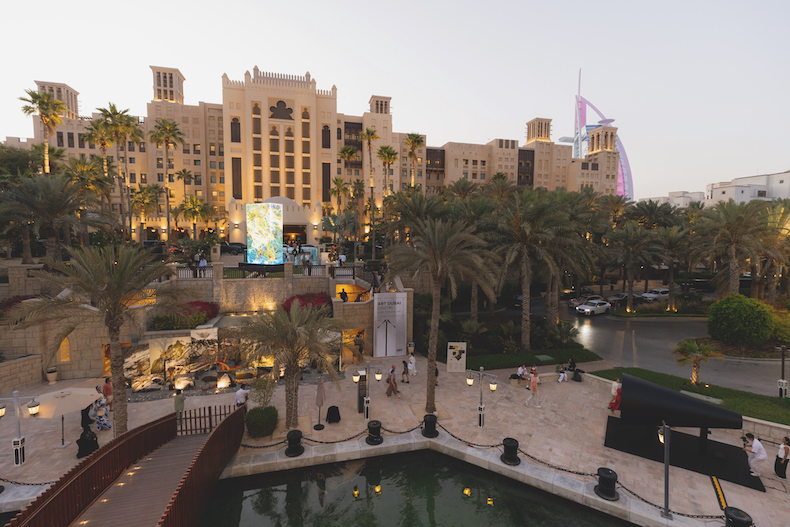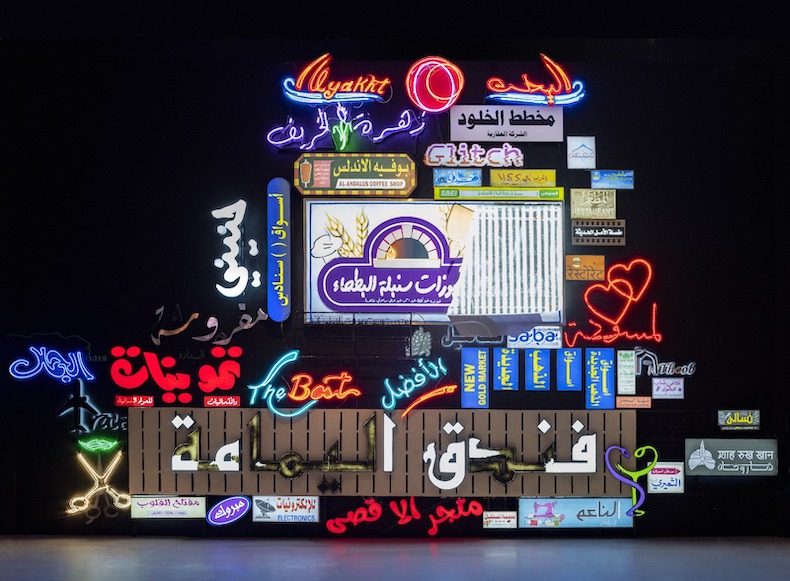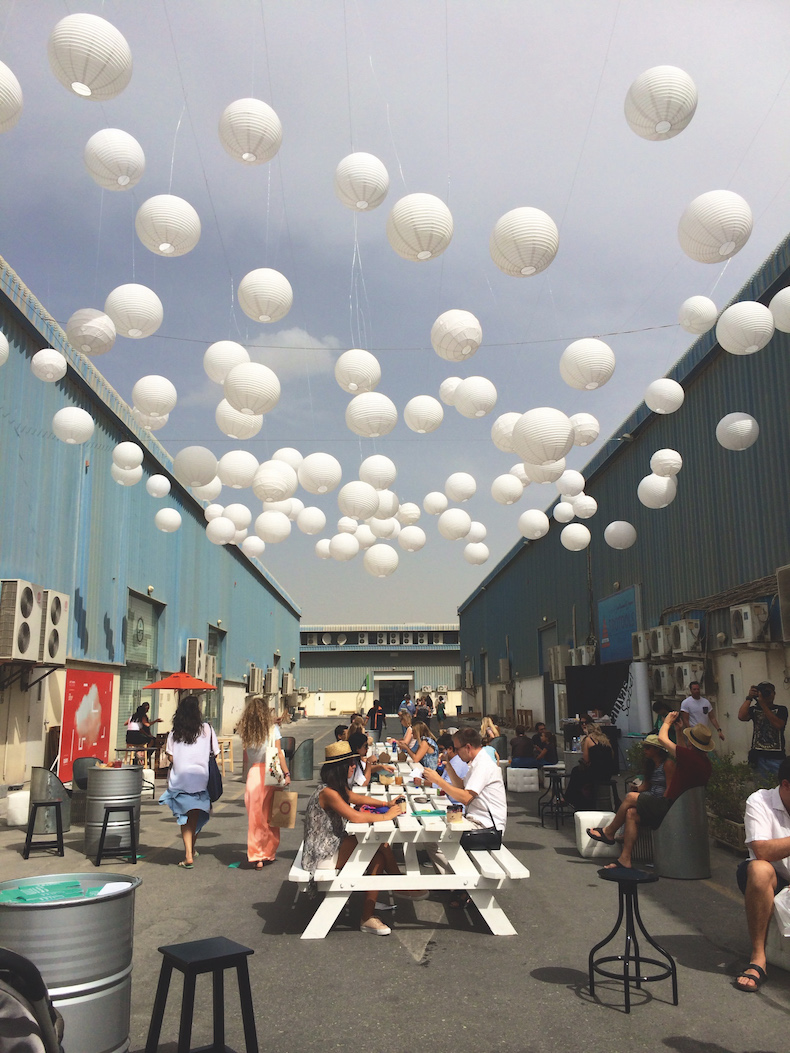From the June 2025 issue of Apollo. Preview and subscribe here.
The international art market can be fickle. Its first flurry of interest in the United Arab Emirates was in the early 2000s, when the art world was rapidly becoming more global. Suddenly contemporary artists from the Middle East – as well as Brazil, Russia, India and China – were all the rage.
Christie’s held its first modern and contemporary art auction in Dubai in 2006, making a respectable $8.5m for Arab, Iranian and Indian artists. A year later, the first edition of the Art Dubai fair opened, founded by a pair of entrepreneurial Brits. The UAE’s Abu Dhabi-based government started to negotiate deals with the Louvre and the Guggenheim to build offshoots of the world-famous museums.
The financial crash of 2008 was a severe setback. But nearly two decades on, as its economy booms, the UAE – and the wider Gulf region – is back in the spotlight.
It began last year with the revelation that an Abu Dhabi sovereign wealth fund, ADQ, had paid $1bn for a 25–30 per cent stake in Sotheby’s, which opened an office in Dubai in 2017. Then in May, Art Basel, which is believed to have been in negotiation for months with Abu Dhabi to open an art fair in the city, announced it had finally clinched a deal with neighbouring – and some say rival – Qatar.
Doha is not a member of the UAE but is just over an hour’s flying time from Dubai. Art Basel Qatar will launch in February 2026, in partnership with Qatar Sports Investments and QC+, the commercial offshoot of Qatar Museums. The move led the Financial Times to declare that this ‘cements the Middle East as the next frontier in the global art market’.
But Qatar’s art market is currently limited – there are barely any commercial galleries and few collectors outside the ruling royal family. Sheikha al-Mayassa bint Hamad bin Khalifa al-Thani, chair of Qatar Museums, sister of the ruling emir of Qatar and a major arts patron, told the newspaper that this was an opportunity for the state to develop its talents beyond museums to the wider industry.
Saudia Arabia has also been dipping its toes in commercial waters. In April, the inaugural edition of Art Week Riyadh presented a selection of 32 commercial galleries in the JAX cultural district, as well as exhibitions across the city. It was billed as ‘non-commercial’ but galleries that were there described it as an alternative art fair.
But for now at least the Gulf’s art market remains firmly centred on Dubai, with a small but growing presence in Abu Dhabi. Sotheby’s, which opened an office in Dubai in 2017, showed off a $100m collection of coloured diamonds in Abu Dhabi in April before their sale in Geneva. This followed the revelation last year that an Abu Dhabi sovereign wealth fund, ADQ, had paid $1bn for a 25–30 per cent stake in the auction house.
Edward Gibbs, chairman of Sotheby’s Middle East and India, says that the region is now ‘extremely important in terms of growing revenue and deepening the relationship with our new co-owners’. He has worked in the Gulf since the early 1990s and believes that ‘there is huge potential in the Middle East. There was a pause after the financial crash, but the UAE is surging back’. He says that the number of bidders from the region has grown by 70 per cent over the past five years.
Christie’s is also eyeing the Gulf again. It has had an office in Dubai since 2005 and is increasing its staffing in the city. ‘The UAE, and indeed the Gulf as a whole, is a market of great potential. We are very excited by it,’ says Anthea Peers, president of Christie’s Europe, Middle East and Africa. She says that sales of modern Middle Eastern art, a favourite of local collectors, trebled in value between 2020 and 2024.
Art Basel will no doubt give a boost to Qatar’s burgeoning art scene, which has opened five major museums since 2008. But for now, almost all commercial galleries in the region are based in Dubai and many based there do not see that changing any time soon.
‘Dubai has always been a place that connects artists, galleries, and collectors from across the region and beyond,’ says Benedetta Ghione, executive director of Art Dubai. ‘As Art Dubai approaches its 20th edition [2026], it’s a timely reminder of what has been built here over the past two decades: a vibrant, layered ecosystem shaped by consistent investment, collaboration and ambition.’
Elie Khouri, a Lebanese-French entrepreneur and one of the region’s major art collectors, welcomed the new fair but says that Art Basel’s presence ‘raises valid questions. Kudos to Sheikha Mayassa for relentlessly driving Qatar’s cultural agenda and investing in its infrastructure. But with established fairs in Dubai and Abu Dhabi and another on the horizon in Saudi Arabia, do we need another fair in a region where the art market is small and the ecosystem is still maturing?’
That question may take some time to answer. Meanwhile, April’s edition of Art Dubai was judged by many to be the best for several years. Maliha Tabari, a pioneer of the Emirati art scene who founded Tabari Artspace in 2003, says: ‘In many ways we are still on a learning curve. But this year Art Dubai brought in really interesting international curators and museums, and they found what we are doing fascinating.’
The organisers of the fair say that curators came from overseas museums including the Tate, the Baltimore Museum of Art and the Whitney Museum of American Art. Major collectors, including Usha Mittal and Sultan Sooud Al Qassimi, a member of Sharjah’s royal family, were spotted. International galleries are once again moving in: Continua opened in Dubai in 2021 and Perrotin in January, and locals say that others are looking too.
The Art Dubai fair, in the grounds of the Madinat Jumeirah Hotel. Photo: Spark Media

The shift in international perception has come as the UAE has transformed itself faster than expected. The seven emirates that make up the union – Abu Dhabi, Dubai, Sharjah, Ras Al Khaimah, Fujairah, Umm Al Quwain and Ajman – were once a series of small pearl fisheries bordered by Saudi Arabia, Oman and the Persian Gulf. From the 19th century to the 1960s they were a British protectorate. Oil was first discovered in Umm Shaif near Das Island, Abu Dhabi, in 1958; by 1972, all seven were independent and had formed the UAE, with Abu Dhabi as its capital.
Oil has made the emirates wealthy. The UAE pumps nearly 5m barrels a day and, according to OPEC, has bigger crude oil reserves than Russia. Oil earns the federation roughly $100bn a year, or $100,000 per Emirati citizen. There are an estimated 10m people in the UAE, of which only 1m are citizens – full citizenship is open to foreigners only in rare circumstances.
But the current boom owes more to the government’s determination to create a robust post-oil economy; oil now accounts for less than a third of its GDP. The government has used its oil wealth to invest strategically in important industries at home and abroad and, led by Dubai, has created low-regulation, low-tax economic zones.
The UAE signed normalised diplomatic relations with Israel in 2020 and decided not to implement sanctions against Russia. Israelis and Russians have moved to the region, joining Americans, Europeans, Indians and Africans, as well as Lebanese, Palestinians and Jordanians. They are attracted by high-paid, low-taxed jobs and the ease of setting up businesses. The Economist, in a report coinciding with the COP 28 climate-change conference hosted in Dubai in 2023, wrote: ‘The messier the world gets the more the UAE seems to thrive.’
The strategy appears to be working. The non-oil parts of the economy have been growing at six per cent a year since 2022, the Economist reports. Henley & Partners, an international wealth management firm, placed the UAE at the top of its list of ‘millionaire inflows’, with an estimated 6,700 moving there in 2024. ‘Post-Covid, Dubai has become a magnet for talent and money, and that means more people buying homes, living here and buying works of art,’ says Elie Khouri, a Lebanese-French entrepreneur and art collector.
Meanwhile, the government has been investing in big-ticket cultural projects, especially in Abu Dhabi. In April, the UAE hosted its annual Culture Summit, a glittering event by arts conference standards. Speakers included the former prime ministers of New Zealand, Slovakia and Mauritius, 20 international culture and education ministers and senior executives from Google, as well as architects, artists and museum directors.
The conference took place on Saadiyat Island, a new culture and tourism district created with an initial budget of $27bn. The Louvre Abu Dhabi opened there in 2017, the Abrahamic Family House interfaith centre in 2023 and the new teamLab Phenomena in April. They will be soon joined by the Foster + Partners-designed Zayed National Museum, the Mecanoo-designed Natural History Museum and Frank Gehry’s Guggenheim Abu Dhabi. The total cost of all of these is undisclosed but construction alone must have cost several billion dollars.
This huge investment in culture is encouraging new galleries to open in Dubai and even in more restrained Abu Dhabi. Maryam Al Falasi set up Iris Projects last November in Mina Zayed – a former industrial area near Abu Dhabi’s port that also houses the independent, non-profit arts space 421. ‘Abu Dhabi is the perfect ecosystem, you have the artists, you have the collectors and the museums. The only thing that was missing was a contemporary gallery,’ Al Falasi says, explaining why she chose the capital.
Installation view of Manifesto: The Language and the City (2021) by Abdullah Al Othman at Art Dubai, 2025. Courtesy the artist and Iris Projects

NIKA Project Space opened in Dubai in 2023 to focus on artists from ‘marginalised countries such as Mongolia and Kazakhstan’, according to its Russian founder, former lawyer Veronika Berezina. ‘It’s exciting to be a part of this evolving art scene and to be able to bring something meaningful to it,’ she says.
Efie Gallery, founded in 2021 by London-, Ghana- and Dubai-based Valentina Mintah and her two sons, Kwame and Kobi, is gaining a reputation for exciting shows. It focuses on artists of African origin and earlier this year opened a large new space in Alserkal Avenue, with a music room and cafe attached.
Kwame Mintah says that the mindset in the UAE is part of the appeal. ‘The ease of doing business here means you don’t have time to doubt yourself – it is so fast to get something off the ground. And the city is very diverse, it’s very appealing to be somewhere where almost everyone else is an immigrant too.’
Attitudes to art are less constrained, he says. ‘In the West, everything to do with African art is looked at through the lens of colonisation. That is an important topic, but we wanted to get to the point where African art has the same level of freedom as everything else, where anything can be “African”.’
‘It’s almost overwhelming how fast things have developed,’ says Sunny Rahbar, who founded The Third Line gallery in 2005. ‘When we opened, there was almost nothing going on here – you couldn’t even find picture framers. And now we are in another super-growth phase: there are new, good-quality galleries, there are new collectors, even young people in the tech sector, the “crypto bros”, are buying art.’
But with 20 years’ experience, Rahbar knows that things can easily change. ‘There’s been a series of booms and busts here. Maybe we’ve arrived at a place where we’re going to stabilise, but you never know,’ she says.
There are other reasons that anyone looking for a quick return in the UAE should be cautious. The scene is still small – there are maybe as few as 30 galleries, insiders say – and prices are relatively low. At Art Dubai, Zawyeh Gallery, based in Dubai and Ramallah, sold works by Nabil Anani priced between $100,000 and $650,000, but most sales were in the $30,000 range.
The focus of most local collectors is on the artists of the Middle East and not beyond. ‘People are very patriotic and support the art of their region,’ says Katia Nounou Boueiz, deputy chairman of Sotheby’s Middle East. Many more prefer to buy luxury goods – watches, jewellery, cars and high-end property, which has boomed in recent years.
Alserkal Avenue, in the former industrial zone of Al Quoz, Dubai. Courtesy Alserkal Arts Foundation

Grassroots aspects of the art scene remain under-developed – opportunities for artists to study and work in the UAE in the early part of their careers are limited. ‘There’s a great sense of community and appreciation and patronage,’ says Faisal Al Hassan, director of 421. But affordable studio space in such expensive cities is hard to find. ‘There’s a big gap [for artists] before they have representation by international galleries or show in major institutions. And there aren’t yet enough curators who are trained here and can talk about our region,’ he says.
For all its many attractions, life in the UAE is not for everyone. The emirates have set out ambitious targets to reach net zero by 2050 but they have a long way to go. The climate means that per capita carbon emissions are some of the highest in the world, according to the Global Carbon Project. It is socially one of the most liberal states in the region but politically is a de facto autocracy, and media comment on the government, the royal families and religion is tightly controlled. Many accept this for the trade-offs – prosperity and security – but it may appeal less to more politically minded artists, curators or art critics.
Nevertheless, for many the UAE remains one of the most exciting emerging regions in the art world. Mariët Westermann, director of the Guggenheim group of museums, was in Abu Dhabi to speak at the Culture Summit, after several years as vice-chancellor of NYU Abu Dhabi. ‘It is utterly inspiring to work in a country with long-term vision and the willingness to put resources into its cultural endeavours,’ she says. ‘If people spend time here, they will get a different picture: this is a flourishing, cohesive and diverse society.’
The summit coincided with the closing days of the new Public Art Biennial Abu Dhabi. It presented work by nearly 60 artists and collectives, including 40 new commissions, in public spaces around the city. Some of the overseas artists were in town and contrasted the funding and enthusiasm of the UAE government with shrinking budgets and political interest at home. ‘Artists want the chance to make the best work they can,’ one said. ‘This region feels like the future.’
From the June 2025 issue of Apollo. Preview and subscribe here.
4 June 2025: This piece has been updated since the announcement of the launch of Art Basel Qatar in February 2026.



